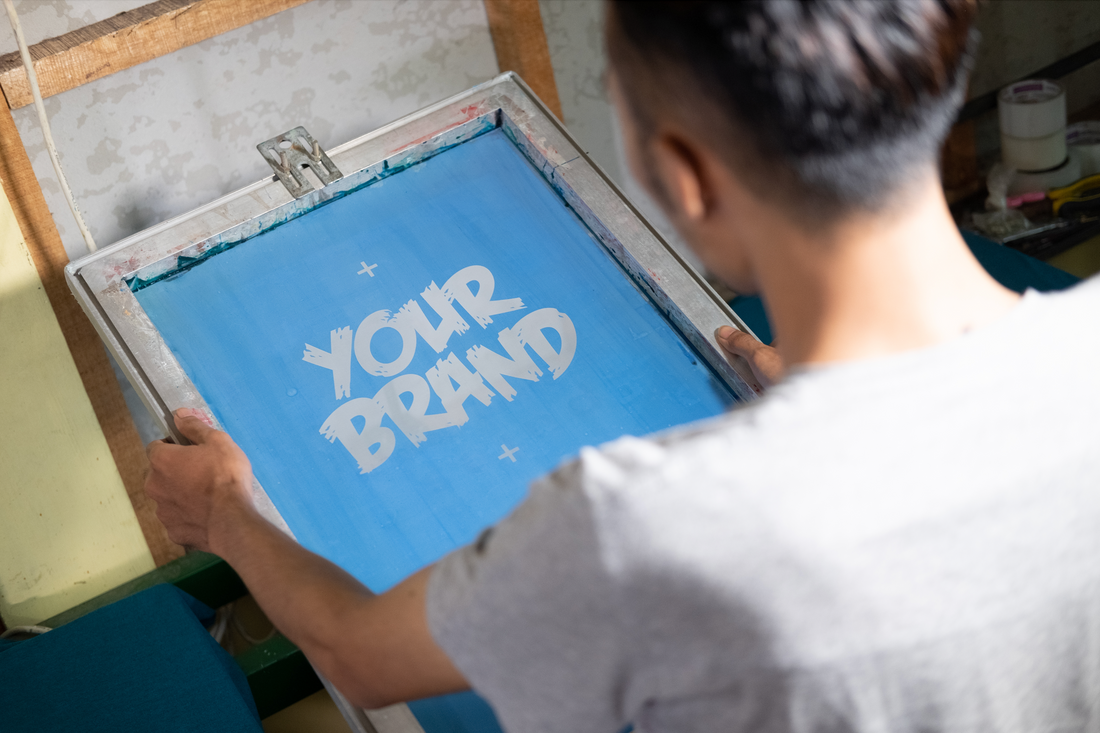Introduction to Screen Printing
Screen printing is a versatile, cost-effective, and time-honored method of transferring designs onto various materials, including fabric, paper, and glass. At its core, screen printing involves creating a stencil (the screen) and using it to apply ink onto a surface. With its durability and vibrant colors, screen printing has become the go-to choice for creating custom t-shirts, promotional items, and more.

The History of Screen Printing
The art of screen printing dates back over 1,000 years to ancient China. It later spread to other Asian countries like Japan and then eventually made its way to Europe in the 18th century. Screen printing gained popularity in the United States during the 20th century, with artists like Andy Warhol and Roy Lichtenstein using the technique to create iconic pop art pieces.

Screen Printing Process Explained
The screen printing process involves several steps, each crucial to achieving a high-quality final product:
-
Design Creation: The design is created digitally, often using graphic design software like Adobe Illustrator or Photoshop.
-
Screen Preparation: A mesh screen is coated with a light-sensitive emulsion, and the design is placed on the screen. The screen is then exposed to UV light, hardening the emulsion and creating the stencil.
-
Ink Application: The screen is placed over the garment, and ink is applied to the stencil. A squeegee is used to push the ink through the mesh, transferring the design onto the material.
-
Curing: The ink is dried and cured, usually using a conveyor dryer or heat press, to ensure it is durable and resistant to washing.
-
Clean-up: The screen is cleaned and reclaimed, allowing it to be used for future projects.

Types of Inks Used in Screen Printing
Various inks can be used in screen printing, each with its unique characteristics:
-
Plastisol: The most common type of ink used in screen printing, plastisol is a PVC-based ink that is easy to work with and produces vibrant, durable prints.
-
Water-Based Inks: These inks have a softer feel and are eco-friendlier than plastisol inks. However, they may not be as vibrant or long-lasting.
-
Discharge Inks: Discharge inks remove the existing dye from the fabric and replace it with the ink color. This results in a soft, natural feel but may have limited color options.
-
Specialty Inks: Inks like metallic, glow-in-the-dark, and puff inks offer unique effects and textures, adding a touch of creativity to your designs.

Choosing the Right Screen Mesh
The screen mesh plays a crucial role in screen printing, as it determines the level of detail and ink deposit. Screens come in different mesh counts, which refer to the number of threads per inch. Here are some factors to consider when choosing a mesh count:
-
Design Complexity: Higher mesh counts are better for intricate designs, while lower mesh counts are suitable for bold designs with large areas of color.
-
Ink Viscosity: Thicker inks require lower mesh counts, while thinner inks work well with higher mesh counts.
-
Fabric Type: Delicate fabrics may require a higher mesh count to avoid heavy ink deposits, while thicker fabrics can handle lower mesh counts.

Screen Printing vs. Other T-Shirt Printing Methods
Screen printing isn't the only method for creating custom t-shirts. Here's how it compares to other popular techniques:
-
Direct-to-Garment (DTG): DTG uses inkjet printers to apply the design directly onto the garment. While DTG can produce intricate designs with a wide range of colors, it may not be as cost-effective for large orders or as durable as screen printing. Check out options on MerchBooth.com for how to create an online store selling your merch using DTG printing - Create a merch store for FREE or upgrade to VIP
-
Heat Transfer: This method involves printing the design onto a heat transfer paper and then applying it to the garment using heat and pressure. Although heat transfers can create vibrant prints, they may not be as long-lasting as screen-printed designs.
-
Sublimation: Sublimation uses heat to turn dye into a gas that bonds with polyester fabrics. This method creates durable, full-color prints but is limited to specific fabric types and light-colored garments.

How to Create a Design for Screen Printing
To ensure the best results, follow these guidelines when creating a design for screen printing:
-
Simplify Your Design: Limit the number of colors and use clean lines and shapes to make the printing process more efficient.
-
Choose the Right Colors: Consider the garment color and ink types when selecting colors for your design. High contrast between the design and garment colors will yield better results.
-
Use Vector Graphics: Create your design using vector graphics software like Adobe Illustrator, as this allows for clean, scalable images without losing resolution.
-
Consider the Print Size: Ensure that your design is appropriately sized for the garment and placement you desire.
Keep in mind that your design will likely be the primary thing that impacts the cost for you to screen print your brand on garments. The larger the image and the more complex the design, including the number of colors and locations of the designs, will cause the price of your investment to go up or down.

Caring for Your Screen-Printed Garments
To prolong the life of your screen-printed items, follow these care tips:
-
Wash Inside Out: Turn garments inside out before washing to protect the design.
-
Use Cold Water: Wash with cold water to prevent ink from bleeding or fading.
-
Air Dry: Hang garments to air dry or use the lowest heat setting on your dryer to avoid damaging the print.
-
Avoid Ironing: Do not iron directly on the design, as this can cause the ink to melt or crack.

Conclusion
Screen printing is a reliable, cost-effective method for creating custom garments with vibrant, long-lasting designs. By understanding the process, ink types, and design considerations, you can ensure that your screen-printed creations stand out and leave a lasting impression.
Equipment
Unveiling the Best Screen Printing Machines for Beginners: Your Ultimate Guide
How to Choose the Right Screen Printing Press for Your Business: A Comprehensive Guide
The Ultimate Screen Printing Kit Buying Guide
Ink
A Beginner's Guide to Screen Printing Inks
Why Water-Based Screen Printing Ink is the Future
The Benefits of Using Discharge Screen Printing Ink
Screen
How to Choose the Right Screen Printing Mesh for Your Project
Everything You Need to Know About Screen Printing Frames
The Ultimate Guide to Screen Printing Emulsion
Technique
7 Essential Screen Printing Techniques for Beginners
How to Screen Print on Fabric: A Beginner's Guide
The Basics of Screen Printing on Paper
Service
Get Custom Screen Printing for Your Business or Event
Find Screen Printing Services Near You
The Best Online Screen Printing Services for Your Business
Supplies
The Essential Screen Printing Supplies You Need

